The passing of Duchess Marie of Saxe-Altenburg, the last surviving member of the Gotha royal family, marks the end of an era in European history. Born in 1874, Duchess Marie lived through significant events that shaped the continent, including both World Wars and the tumultuous years that followed.
Throughout her life, Duchess Marie was known for her strong sense of duty and her dedication to her family and her country. As the daughter of Prince Albert of Saxe-Altenburg and Princess Charlotte of Prussia, she was a member of the royal family and played an important role in the history of the region. Her passing leaves behind a legacy of service and commitment to the values of her family and her heritage.
what were the key achievements of Duchess Marie during her reign
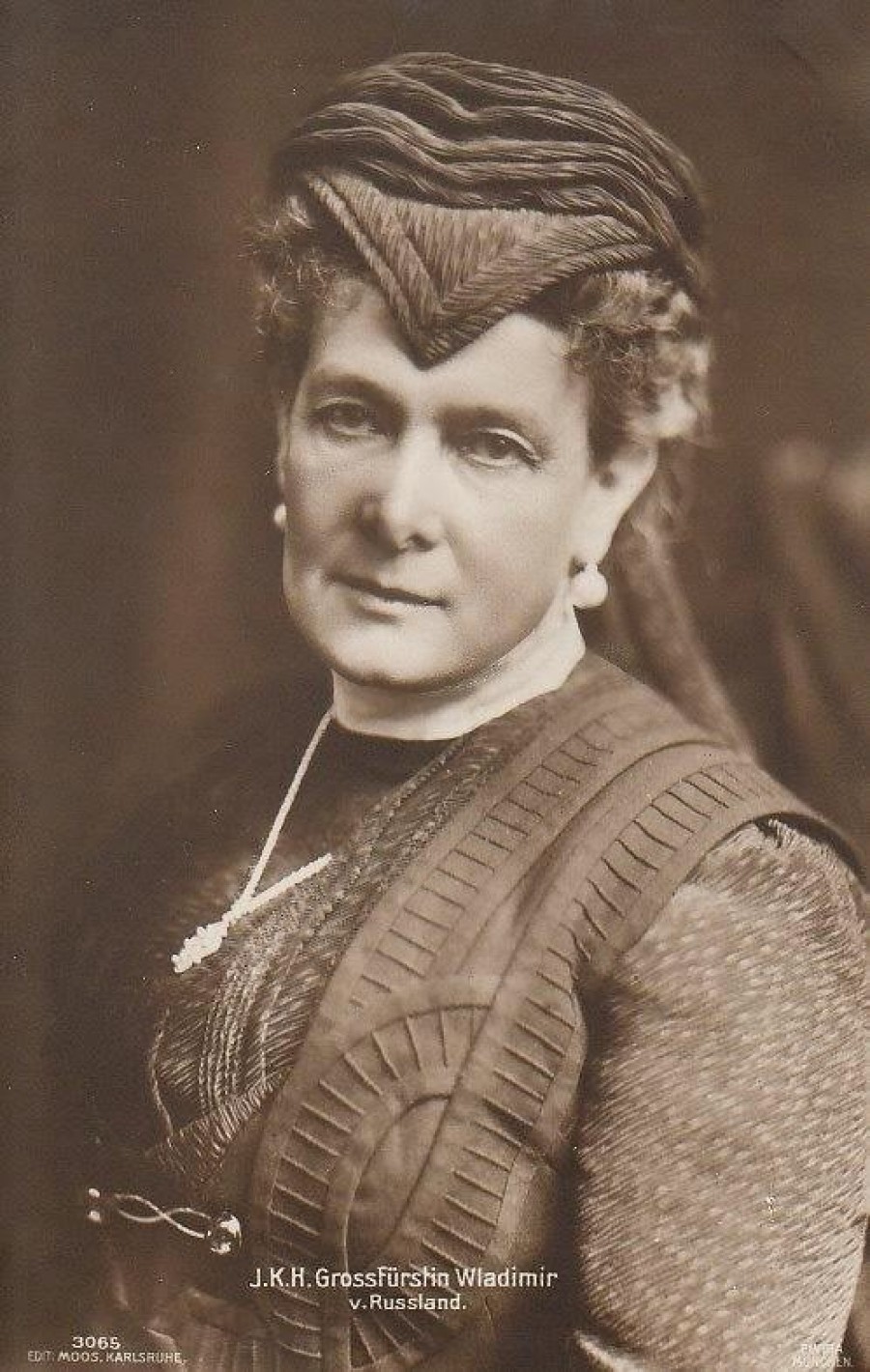
what were the major challenges Duchess Marie faced during her reign

- Financial Crisis: The country was facing a grave financial crisis, which was exacerbated by her lavish spending and the opposition to her husband’s involvement in the American Revolutionary War.
- Court Factionalism: She played a crucial role in court factionalism, which led to the rise of the Polignac family and their dominance at court, fueling popular disapproval of her and the monarchy.
- Declining Popularity: Despite the birth of an heir, her popularity began to decline due to her perceived influence on her husband’s policies and her lavish lifestyle, which was seen as out of touch with the financial struggles of the common people.
- War and Conflict: The Kettle War and the French Revolutionary War posed significant challenges, with her brother’s claims to the throne of Bavaria and her husband’s involvement in the American Revolutionary War leading to tensions and conflicts.
- Personal Relationships: Her relationships with key figures like Lafayette and Necker were complex and often contentious, with accusations of infidelity and political manipulation further eroding her popularity.
- Court Intrigue: The rivalry between the royal family and the aristocracy, particularly the Polignacs, created an atmosphere of court intrigue and competition for power and influence.
- Changing Social Norms: The rise of the Enlightenment and the French Revolution led to significant changes in social norms, which Duchess Marie struggled to adapt to, particularly in her fashion choices and her role in court politics.
These challenges, among others, significantly impacted Duchess Marie’s reign and her legacy.
how did Duchess Marie’s personal life affect her reign
Marriage and Family
Marie’s marriage to Vladimir was seen as a strategic alliance between the two royal families. She was known for her beauty and her ability to host lavish parties, which made her a popular figure in Saint Petersburg. The couple had five children, but their marriage was not without its challenges. Marie’s husband was known for his infidelities, and she was often left to manage the family and their social obligations on her own.
Personal Relationships
Marie’s relationships with key figures like Lafayette and Necker were complex and often contentious. She was accused of having an affair with Lafayette, which she denied, and her relationship with Necker was marked by tension and disagreement over financial and political issues.
Personal Choices
Marie’s personal choices, such as her lavish spending and her opposition to her husband’s involvement in the American Revolutionary War, were criticized by many. Her husband’s infidelities and her own desire for social status and influence further complicated her position and led to declining popularity.
Impact on Reign
The personal challenges and controversies surrounding Marie’s life had a significant impact on her reign. Her marriage and personal relationships influenced her political decisions and her ability to manage the family and their social obligations. Her declining popularity and the controversies surrounding her personal life ultimately contributed to the decline of her influence and the end of her reign.
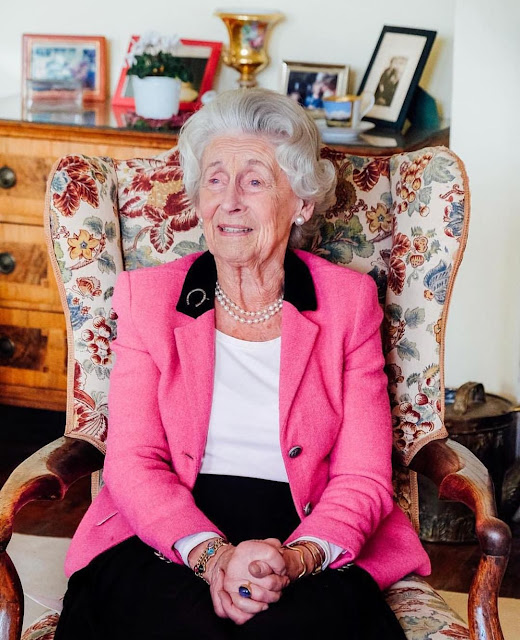 |
| Duchess Marie-Alix of Schleswig-Holstein on the occasion of her 95th birthday. Photo courtesy of Fürst Alexander zu Schaumburg-Lippe / Stiftung Louisenlund. |
On Monday, 1 November 2021, Dowager Duchess Marie-Alix of Schleswig-Holstein died peacefully at her home of Gut Bienebek in Holstein. She was ninety-eight years-old. The four children of the duchess were by her side when she died in her sleep; after her passing, the family released a brief statement: “In deep sorrow and full of love we say goodbye to our mother, grandmother and great-grandmother and look back on her eventful and fulfilled life with respect and immense gratitude.“
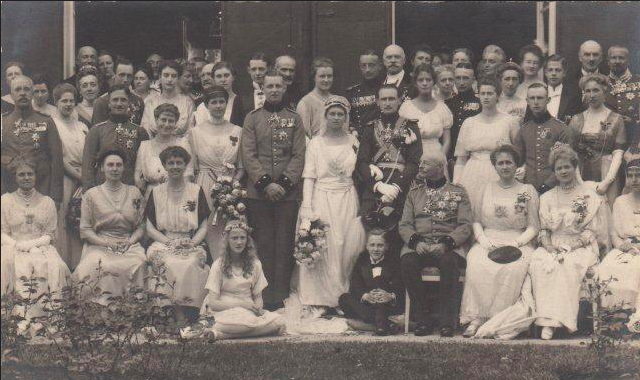 |
| The wedding of Prince Stephan zu Schaumburg-Lippe and Duchess Ingeborg of Oldenburg, 1921. |
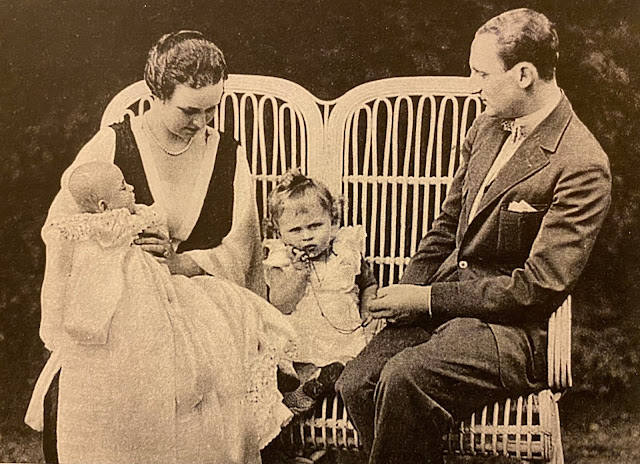 |
| Prince Stephan and Princess Ingeborg with Princess Marie-Alix and infant Prince Georg-Moritz. Photo (c) David McIntosh. |
Born on 2 April 1923 at Bückeburg, Princess Marie-Alix of Schaumburg-Lippe was the first child and only daughter of Prince Stephan of Schaumburg-Lippe (1891-1965) and Duchess Ingeborg of Oldenburg (1901-1996), who married in 1921. Marie-Alix was followed by a younger brother, Prince Georg-Moritz of Schaumburg-Lippe (1924-1970), who sadly was killed in a automobile accident at the age of forty-six. As her father Stephan was a German diplomat, Marie-Alix lived with her family in Sofia, Bulgaria; Rome, Italy; Rio de Janeiro, Brazil; Buenos Aires, Argentina; and Santiago, Chile. After the end of World War II, Marie-Alix spent time with her maternal Oldenburg relations in Lensahn, Ostholstein.
 |
| Fürst Georg zu Schaumburg-Lippe. |
 |
| Fürstin Marie zu Schaumburg-Lippe. |
 |
| Grand Duke Friedrich August II of Oldenburg. |
 |
| Grand Duchess Elisabeth of Oldenburg. |
The paternal grandparents of Marie-Alix were Fürst Georg of Schaumburg-Lippe (1846-1911) and his wife Princess Marie of Saxe-Altenburg (1864-1918). Her maternal grandparents were Grand Duke Friedrich August II of Oldenburg (1851-1932) and his second wife Duchess Elisabeth of Mecklenburg-Schwerin (1869-1955). Marie-Alix was a first cousin of Duke Anton-Günther of Oldenburg, Fürstin Eilika of Leiningen, Fürst Wittekind of Waldeck and Pyrmont, Fürstin Guda of Wied, and Fürst Philipp-Ernst of Schaumburg-Lippe.
 |
| Duke Peter of Schleswig-Holstein. Photo (c) David McIntosh. |
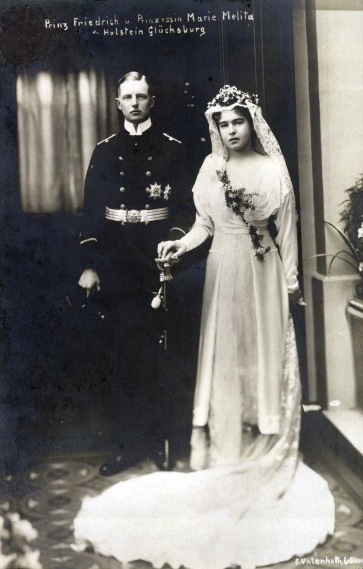 |
| Prince Friedrich Ferdinand zu Schaumburg-Lippe and Princess Marie Melita zu Hohenlohe-Langenburg on their wedding day. |
 |
| Left to right: Duke Friedrich Ferdinand, Prince Peter, and Princess Marie-Alix. Photo (c) David McIntosh. |
 |
| Left to right: Princess Marita, Prince Alexander, Duke Christoph, and Princess Ingeborg. Photo (c) David McIntosh. |
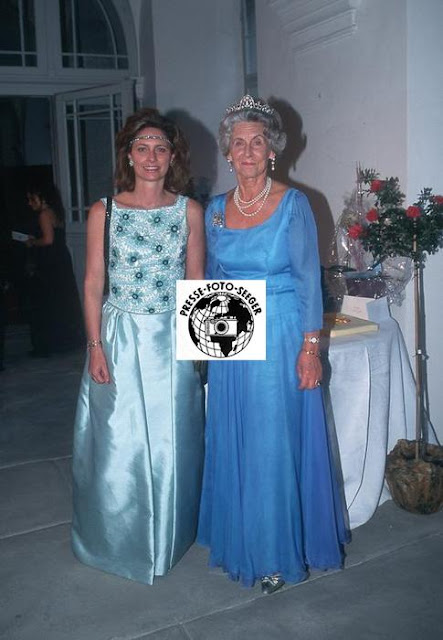 |
| Princess Barbara with her mother-in-law Duchess Marie-Alix at the wedding of Hereditary Prince Bernhard of Baden, 2001. Photo (c) Seeger-Presse. |
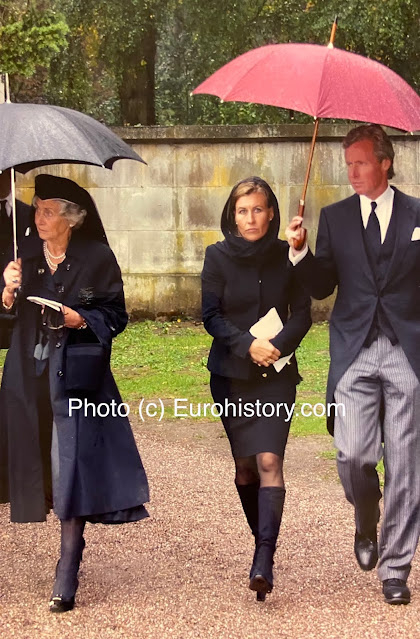 |
| Duchess Marie-Alix together with her son Duke Christoph and daughter-in-law Duchess Elisabeth attend the funeral of Fürst Philipp-Ernst zu Schaumburg-Lippe, 2003. |
 |
| Birthday cheers! Duchess Marie-Alix celebrates her 95th birthday surrounded by students of Louisenlund while her daughter Princess Ingeborg happily looks at her much loved mother. Photo (c) Stiftung Louisenlund. |
Duchess Marie-Alix of Schleswig-Holstein was a co-founder of the Louisenlund Foundation in 1949. This institution was envisioned by her father-in-law Duke Friedrich Ferdinand, and its mission was made a reality by continued support from her husband Duke Peter, her son Duke Christoph, and her daughter Princess Ingeborg. According to its website, Louisenlund “has created a school system with learning and teaching methods which prepare students for the future. To be equipped for the future students must develop social awareness and a strong personality. Since the very beginning, the private foundation, Louisenlund has strived to achieve a holistic education for its students. Moreover, Louisenlund is embedded in a network of international contacts and partner schools. Around 440 students benefit from an education in a global environment whilst enjoying, at the same time the familiar atmosphere of the campus.” Princess Ingeborg, the youngest child of the duchess, is the current chairperson of the foundation’s Board of Governors as well as of the Board of Trustees. The original uniform of Louisenlund students was created from a blue sweater out of Duke Friedrich Ferdinand’s wardrobe and a red sock from his daughter-in-law Duchess Marie-Alix’s closet which served as the collar.
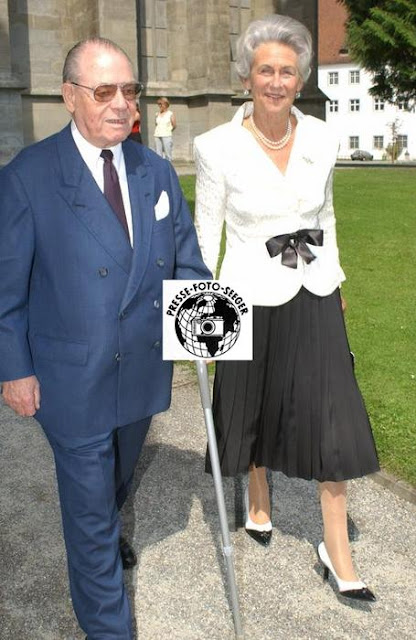 |
| Fürst Friedrich Wilhelm of Hohenzollern and Duchess Marie-Alix at the wedding of Hereditary Prince Bernhard of Baden, 2001. |
 |
| Duchess Marie-Alix with her children Princess Ingeborg and Duke Christoph attend the memorial service for Fürst Kraft zu Hohenlohe-Langenburg, 2004. |
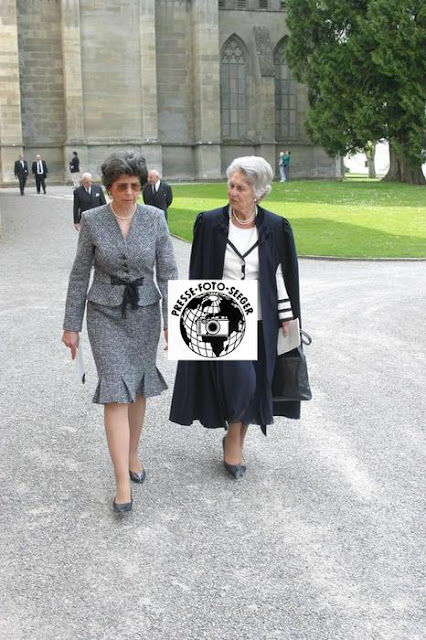 |
| Princess Marianne of Baden and Duchess Marie-Alix attend the funeral of Prince Georg Wilhelm of Hannover, 2006. Photo (c) Seeger-Presse. |
For many decades, Duchess Marie-Alix of Schleswig-Holstein was the Vice-President of the regional branch of the German Red Cross in Holstein. As shown by her dedication to the Louisenlund Foundation, the duchess was particularly keen on the betterment of young people and youth development.
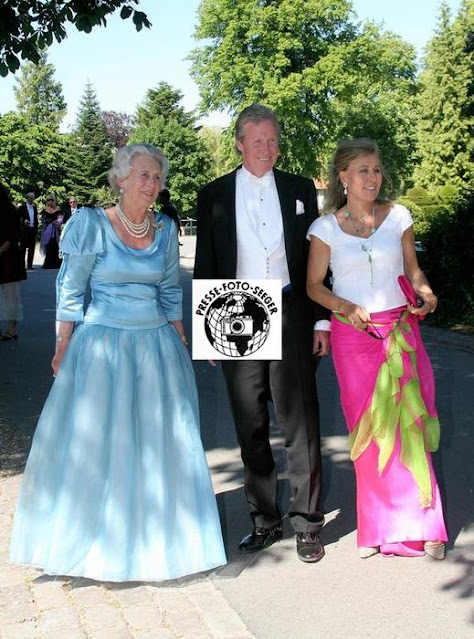 |
|
Duchess Marie-Alix, her son Duke Christoph, and her daugher-in-law Duchess Elisabeth at the wedding of Prince Philipp of Hesse, 2006.
Photo (c) Seeger-Presse / Albert Nieboer.
|
Duchess Marie-Alix of Schleswig-Holstein is survived by her four children, by her nine grandchildren, and by her (at least) five great-grandchildren.
what were the main controversies involving Duchess Marie
As we bid farewell to the Duchess Marie of Saxe-Altenburg, we are reminded of the significant impact she had on European history. Her life was marked by both triumph and tragedy, as she navigated the complexities of royal life and the tumultuous events that shaped the continent. Throughout her life, Duchess Marie remained committed to her family and her heritage, leaving behind a legacy that will be remembered for generations to come. As we reflect on her life, we are reminded of the importance of duty, loyalty, and resilience in the face of adversity.
As we conclude our tribute to the Duchess Marie of Saxe-Altenburg, we are left with a sense of gratitude for the life she lived and the lessons she taught. Her story serves as a reminder of the power of perseverance and the importance of staying true to oneself, even in the face of overwhelming challenges. As we move forward, we are inspired by her courage and determination, and we are reminded of the enduring impact she had on those around her. May her memory continue to inspire and motivate us, and may her legacy serve as a testament to the enduring power of the human spirit.
what were the key challenges Duchess Marie faced during her reign
- Financial Crisis: The country was facing a grave financial crisis, which was exacerbated by her lavish spending and the opposition to her husband’s involvement in the American Revolutionary War.
- Court Factionalism: She played a crucial role in court factionalism, which led to the rise of the Polignac family and their dominance at court, fueling popular disapproval of her and the monarchy.
- Declining Popularity: Despite the birth of an heir, her popularity began to decline due to her perceived influence on her husband’s policies and her lavish lifestyle, which was seen as out of touch with the financial struggles of the common people.
- War and Conflict: The Kettle War and the French Revolutionary War posed significant challenges, with her brother’s claims to the throne of Bavaria and her husband’s involvement in the American Revolutionary War leading to tensions and conflicts.
- Personal Relationships: Her relationships with key figures like Lafayette and Necker were complex and often contentious, with accusations of infidelity and political manipulation further eroding her popularity.
- Court Intrigue: The rivalry between the royal family and the aristocracy, particularly the Polignacs, created an atmosphere of court intrigue and competition for power and influence.
- Changing Social Norms: The rise of the Enlightenment and the French Revolution led to significant changes in social norms, which Duchess Marie struggled to adapt to, particularly in her fashion choices and her role in court politics.
These challenges, among others, significantly impacted Duchess Marie’s reign and her legacy.




